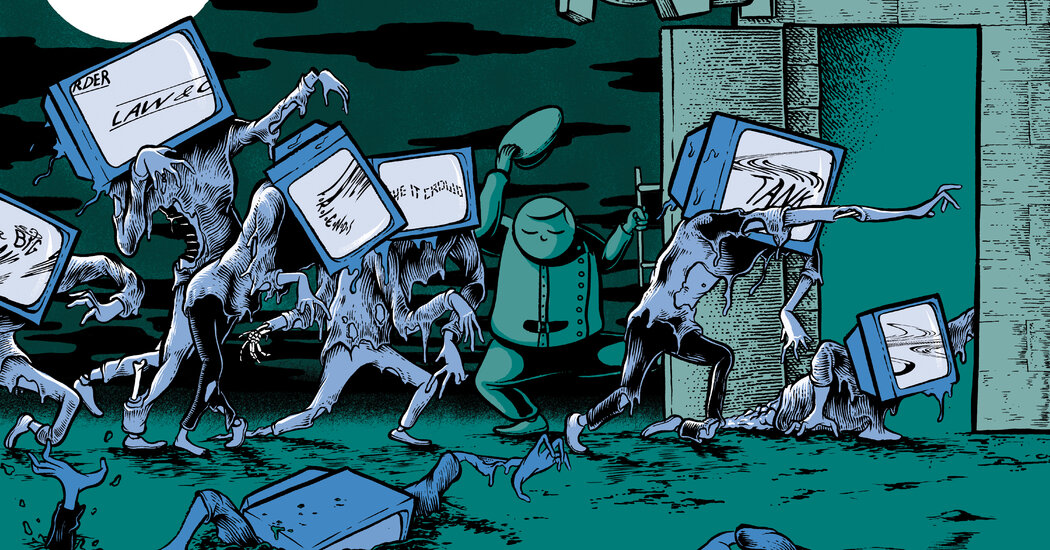Overlooked No More: Elena Zelayeta, Emissary for Mexican Cooking
This article is part of Overlooked, a series of obituaries about remarkable people whose deaths, beginning in 1851, went unreported in The Times.
In 1934, Elena Zelayeta was an up-and-coming chef of Mexican cuisine expecting her second child when her eyesight began to falter. She visited a doctor, who told her there was no hope: A mature cataract and detached retina would ultimately leave her blind.
Her disability forced her to step away from Elena’s Mexican Village, the San Francisco restaurant she had been operating for four years, serving chili swimming with ground beef and soups simmering with cheesy mounds of fluffy dough in a tomato-rich broth. In the absence of its figurehead, the restaurant was soon crushed by debt, to the point of closing. Zelayeta herself fell into a depression so fierce that she contemplated ending her life.
But after two years of inertia, cooking lifted her out of her misery. She relied upon her other senses, cracking eggs into her palms and separating them by letting the gooey insides slink through her fingers; smelling deep fat to assess its temperature; and poking at meat with her fingers to determine its doneness.
She would go on to write four cookbooks as well as a self-help book and a memoir, star in a cooking program in the early 1950s, when food television was in its nascency, and start her own frozen food brand in an era when Swanson television dinners were just starting to curry public favor. All of it made Zelayeta America’s most prominent evangelist for Mexican cooking for three decades.
Her success came at a time when many Americans regarded Mexican cuisine in belittling terms. “I think that Mexican food was thought of as kind of a low-level party food,” a granddaughter, also named Elena Zelayeta, after her grandmother, said in an interview. “I don’t think it was thought of as a cuisine.”
Elena Loshuertos was born on Oct. 3, 1897, to a Spanish immigrant family in Mexico City. Her father, Don Manuel Loshuertos, and her mother, Doña Luisa Soriano, ran an inn and restaurant in El Mineral del Oro, a small gold-mining town about 80 miles northeast of Mexico City.
Elena assisted her mother in the kitchen, stringing vivid cerise chilies to dry in the sun, grinding cumin seeds with a mortar and pestle, and dampening and heating tortillas.
What was meant to be a family vacation to San Francisco ended up being a permanent stay with the outbreak of the Mexican Revolution in 1910, when the family home was destroyed.
The family’s first months in San Francisco were “tinged with sadness as we tried so hard to fit into the strange ways of a new land,” Zelayeta wrote in her self-help book, “Elena’s Lessons in Living” (1947). Discrimination was routine: At school, students taunted Elena and her siblings for the staccato intonation of their speech. To make ends meet, she hawked her mother’s tamales door to door.
It was during the throes of the Depression, when it was difficult to find work, that Zelayeta decided to realize her long-gestating dream of running a restaurant. She and her husband, Lorenzo Zelayeta, whose family also hailed from Mexico, began to serve chiles rellenos, or cheese-stuffed peppers, in their seven-room flat, covering tables with pastel cloths.
Their homegrown restaurant was such a sleeper hit that Zelayeta soon moved it to a building in downtown San Francisco. There, her jubilant personality was as much an attraction as her enchiladas: She would dance for the crowd as they shouted “Olé!”
It was a difficult time for Mexican immigrants, with white Americans accusing them of depriving them of jobs as laborers. From 1929 to 1936, the government forcibly sent more than a million Mexican and Mexican Americans to Mexico.
“The importance of her work, to me, is popularizing Mexican food in the West, and eventually nationwide during a time when many Americans were outright racist about the Mexican/Mexican American people and our culture,” Teresa Finney, who runs an Atlanta micro-bakery, At Heart Panaderia, wrote in an email.
As Elena’s Mexican Village prospered, her vision deteriorated. Faces of regular customers and friends became imperceptible to her. She could barely make out her own reflection in the mirror. “I felt that blindness was something to hide, something to be ashamed of,” she later remembered.
But with time she would take pride in her new identity as a blind woman. “At one time I cried out against His cruelty in taking away my sight,” she wrote in her memoir, published in 1960. “Now I thank Him for the happiness this blindness brought me.”
She taught herself to caramelize sugar without scarring the bottom of the pan, to light a stove over and over until it became second nature to her, to deep-fry chiles rellenos without setting herself aflame.
Her repertoire of recipes became so robust that a group of home economists persuaded her to document her knowledge in a cookbook, her first: “Elena’s Famous Mexican and Spanish Recipes” (1944).
The book was a collective effort: She gathered her recipes — including quesadillas stuffed with taffy-like cheese, guacamole bejeweled with pomegranate seeds and wobbly caramel flan — and dictated them to friends, who in turn transcribed them on a typewriter. Then they probed her with questions to make sure her instructions were airtight.
The cookbook, appearing during World War II, when Americans were growing more curious about cuisines from beyond their borders, was an immediate success. It reportedly sold a half-million copies in her lifetime.
The appeal of her recipes was widened by their flexibility. She wrote, for example, that powdering American chocolate with cinnamon would suffice if readers couldn’t find Mexican chocolate at a grocery store. The Los Angeles Times described her as a “famed authority on the culinary art from south of the border.”
Even as tragedy befell Zelayeta — her husband would die in a freak car accident — cooking moored her. Her friends goaded her to record her resilience in a self-help book, complete with recipes, which made her into a local celebrity in the Bay Area. She began starring in a weekly 15-minute cooking show, “It’s Fun to Eat with Elena,” broadcast throughout California. During the broadcasts, crew members would tug at strings attached to her ankles to signal which of two cameras she should look at.
But it was Zelayeta’s subsequent cookbooks that catapulted her to national fame. Craig Claiborne, a longtime food editor for The New York Times, crowned the third of those books, “Elena’s Secrets of Mexican Cooking” (1958), the “definitive volume on the subject.”
She then began packaging her enchiladas, tacos and Spanish-style meatballs into freezer-ready meals, sold throughout Northern California under the label Elena’s Food Specialties. Her social circle came to include Julia Child and the gourmand James Beard.
Zelayeta was 70 when she published her final cookbook, “Elena’s Favorite Foods California Style” (1967), an encomium to the immigrant food cultures — Mexican, Japanese, Italian — that had impressed themselves upon the state’s palate. By then, other cookbook authors would join in popularizing Mexican cuisine, even those who did not have an attachment to Mexico, like the British-born Diana Kennedy.
Zelayeta died of complications of a stroke in a convalescent home in Pacifica, a city outside San Francisco, on March 31, 1974. She was 76.
Reflecting on her career, she wrote in “Elena’s Lessons in Living”: “Of all the handicaps that afflict us, the greatest by far is fear. All of us have it. All must work to conquer it.”
Mayukh Sen is the author of “Taste Makers: Seven Immigrant Women Who Revolutionized Food in America” (2021). He has won a James Beard Award for his food writing, and his work has been anthologized in three editions of “The Best American Food Writing.”


